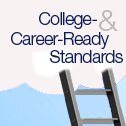Washington
Recognizing the need to get more underrepresented students into college-level courses in high school, a group of education, nonprofit, and business leaders are giving $100 million to identify and enroll 100,000 low-income students and students of color in Advanced Placement and International baccalaureate classes over the next three years.

The announcement was made in WashingtonTuesday where the partnering organizations met to discuss the project, spearheaded by Equal Opportunity Schools, a Seattle-based nonprofit. Other donors and participants in the initiative include the College Board, which administers the AP program, the International Baccalaureate organization, the Jack Kent Cooke Foundation, which supports low-income, high-achieving students, Google, and Tableau Software, Inc. (The Jack Kent Cooke Foundation also supports some coverage of low-income, high-achieving students in Education Week.) Members of the administration’s My Brother’s Keeper Task Force were also part of the meeting today and the commitment is one of several announced in the past year in support of the initiative.
“We are pulling this together to make the largest commitment ever to fully reflecting America’s diversity at the highest academic levels in our K-12 schools,” said Reid Saaris, the founder and chief executive officer of EOS, in a phone interview today. “We haven’t equally included students of all race and income backgrounds so folks are making a commitment to that full inclusion and reflective diversity today.”
Saaris said students would be identified using “deep data,” student grades, and surveys of students, parents, and staff in addition to test scores. EOS, which first began in 2007, has used this model in 63 school districts to provide individualized profiles of students who have the ability to enroll in AP or IB and offer them personal encouragement to participate in those courses.
Using the approach in the 27,000-student Kent School District in Washington state helped enrollment in AP and IB mirror the diverse demographics of the district (where 130 languages are spoken) within a few years, according to Edward Vargas, a former superintendent and now president of the Association of Latino Administrators and Superintendents who attended the partner meeting.
The EOS surveys in Kent revealed students and parents had dreams of going to college, but not all teachers thought they could. An effort was put into raising teacher expectations and providing support for students to enroll in advanced classes. “It really helped to align the goals so if all kids wanted to go college we had the moral responsibility to make that happen,” said Vargas.
Vargas said he thinks the initiative announced today by EOS will create more synergy around the issue and create new levers to get more teenagers access to advanced coursework.
David Belcher, a former superintendent of Columbia Public Schools in Missouri, said the EOS program cost his district just $29,000 for one year and in that time schools were able to close the participation gap in AP for underrepresented groups to within 1 percentage point. The key, he said, was the personalized push that prinicipals, counselors, and teachers made with students. “We give them the talk that they need to step up to the plate,” says Belcher, who now teaches at the University of Missouri. “Underrepresented children often have parents who do not have the understanding or access to push them....a school has to do that.”
The College Board’s AP Potential program uses PSAT scores to find students with the aptitude to excel in an AP course and provide schools with their names so counselors can encourage those students to enroll. About 20 percent of schools that administer the PSAT participate, according to the College Board. The latest AP report finds that as many as four in 10 students in the class of 2014 did not take an AP course for which they showed likelihood of success.
A 2013 report by the Education Trust estimates about 640,000 underrepresented students are missing from AP and IB. About 12 percent of high school students attending schools with AP classes participate. Middle- and high-income students at these schools are three times as likely to enroll in an AP course as are low-income students, the report shows.
Saaris of EOS said details would be released in late summer about how the project will proceed and which districts it will work with to improve equity and access to advanced courses.